by Michael Loveday
The novel-/novella-in-flash is a curious form. Not a straightforward novel/novella, nor simply a story collection, it functions as a hybrid. Its enthusiasts, myself included, resemble TV evangelists on obscure late-night channels, full of zeal as to why this of all literary forms is the most satisfying, and the closest equivalent to real life – that fusion of ‘story’ and the individual, numinous moment.
What follows is a list of twelve examples of the novel-/novella-in-flash, with some commentary that tries to approach a definition of what the form is, and what it isn’t. I’ve included some examples that stretch the category a little, so we can get to know its edges.
Broadly speaking, the novel-/novella-in-flash consists of a sequence of individual but related short-short stories that somehow build momentum towards a bigger whole. The craft essays in My Very End of the Universe: Five Novellas-in-Flash and a Study of the Form describe how the form “mixes the quick and the sustained” and blends “the extreme brevity of the flash with the longer – albeit still brief – arc of the novella.” Despite the requirement for a coherent whole, because any overarching story is broken into distinct mini-stories or fragments, the novel-/novella-in-flash “is a form of omission and lacuna.”
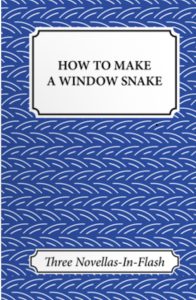 The Bath Flash Fiction Award now has an annual international competition dedicated to the Novella-in-Flash and publishes an anthology of the three winning entries each year. The sensationally good How to Make a Window Snake by Charmaine Wilkerson was its inaugural winner in 2017. This competition asks for each chapter or flash to be not more than 1,000 words long, with the whole (for the novella-in-flash) between 6,000 and 18,000 words long. However, some of the twelve books in my list below are more like novels, and so run to several thousand more words than this.
The Bath Flash Fiction Award now has an annual international competition dedicated to the Novella-in-Flash and publishes an anthology of the three winning entries each year. The sensationally good How to Make a Window Snake by Charmaine Wilkerson was its inaugural winner in 2017. This competition asks for each chapter or flash to be not more than 1,000 words long, with the whole (for the novella-in-flash) between 6,000 and 18,000 words long. However, some of the twelve books in my list below are more like novels, and so run to several thousand more words than this.
Inevitably, in a list of only twelve books, there are significant exclusions, and I acknowledge that the list is a very subjective one. Still, I hope it serves as a useful way forward for readers wanting to discover more about the form. (As the list is limited to examples of fiction, I’ve not included memoir-in-flash.)
- Candide, or Optimism (Voltaire, 1759)
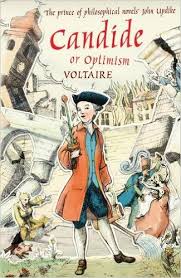 Cannibalism, murder, STDs, flogging, hanging, shipwreck, El Dorado, earthquake – in a mere 86 pages this eighteenth-century proto-novella-in-flash has all the drama you could want. Nevertheless, a philosophical tale at heart, Voltaire’s book satirises the mode of the chivalric romance through its story of a young man beset by bad luck who travels the world to find (and lose) his fortune. It possesses many characteristics that would later become defining features of the novella-in-flash: it’s short; each chapter (with one exception) is less than 1,000 words; and, because of its varied locations and ensemble cast of secondary characters, each chapter has its own distinct mood and material, that necessary sense of being a ‘world of its own.’ If it falls short of the novella-in-flash as we now know the form in its purest sense, it’s because (as with many novels from the 18th century to the present day) many chapters close by preparing us for the next or depend directly on the previous one in narrative terms. What came later to the form was a stronger sense of a pause or ‘resonating space’ at the end of each chapter, and the feeling that the overall text offers, rather than one continuous narrative thread, an interwoven patchwork of self-contained moments. Nevertheless, the roots of the novella-in-flash can be seen in Voltaire’s writing.
Cannibalism, murder, STDs, flogging, hanging, shipwreck, El Dorado, earthquake – in a mere 86 pages this eighteenth-century proto-novella-in-flash has all the drama you could want. Nevertheless, a philosophical tale at heart, Voltaire’s book satirises the mode of the chivalric romance through its story of a young man beset by bad luck who travels the world to find (and lose) his fortune. It possesses many characteristics that would later become defining features of the novella-in-flash: it’s short; each chapter (with one exception) is less than 1,000 words; and, because of its varied locations and ensemble cast of secondary characters, each chapter has its own distinct mood and material, that necessary sense of being a ‘world of its own.’ If it falls short of the novella-in-flash as we now know the form in its purest sense, it’s because (as with many novels from the 18th century to the present day) many chapters close by preparing us for the next or depend directly on the previous one in narrative terms. What came later to the form was a stronger sense of a pause or ‘resonating space’ at the end of each chapter, and the feeling that the overall text offers, rather than one continuous narrative thread, an interwoven patchwork of self-contained moments. Nevertheless, the roots of the novella-in-flash can be seen in Voltaire’s writing.
- Mrs. Bridge (Evan S. Connell, 1959)
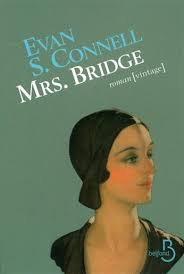 A magnificent portrait of a middle-class woman, and her family, in mid-twentieth-century suburban America. Its 117 short chapters are written with a relentless, quiet conviction that insists: these characters really do exist. Mrs. Bridge, whose story we follow from youth to old age, is alienated from her life and her feelings, as she raises a family and builds a life for herself in the absence of any romantic attentions from her husband. Readers glimpse an existential dread running through her observations and interactions, and yet she potters on distractedly, somewhat bewildered by the changes in her world, and keeping up appearances in that very middle-class, mid-twentieth-century way. Subsequently overshadowed by the careers of Updike, Roth and Yates, whose debut books appeared at around the same time, Connell’s tragicomic first novel is a classic of social realism – a brilliant portrait of the inter-war dissatisfactions of American women – and should be read in conjunction with its sequel Mr. Bridge (1969), dealing with the same family life from the husband’s point of view.
A magnificent portrait of a middle-class woman, and her family, in mid-twentieth-century suburban America. Its 117 short chapters are written with a relentless, quiet conviction that insists: these characters really do exist. Mrs. Bridge, whose story we follow from youth to old age, is alienated from her life and her feelings, as she raises a family and builds a life for herself in the absence of any romantic attentions from her husband. Readers glimpse an existential dread running through her observations and interactions, and yet she potters on distractedly, somewhat bewildered by the changes in her world, and keeping up appearances in that very middle-class, mid-twentieth-century way. Subsequently overshadowed by the careers of Updike, Roth and Yates, whose debut books appeared at around the same time, Connell’s tragicomic first novel is a classic of social realism – a brilliant portrait of the inter-war dissatisfactions of American women – and should be read in conjunction with its sequel Mr. Bridge (1969), dealing with the same family life from the husband’s point of view.
- Play It as It Lays (Joan Didion, 1970)
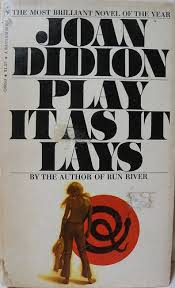 An appealing cocktail of ennui, glamour, tragedy and spiky dialogue, this book’s whip-smart sentences convincingly depict life on the margins of the Hollywood movie industry, as a minor actress heads on a path of self-destruction prompted by a growing indifference to her milieu and the realities of the choices she has made. Most of the unnumbered chapters are story-fragments – from one paragraph to five pages. Some are impressionistic moments; others run in sequence, picking up where the previous one left off. Thus, not all the chapters are fully developed to become self-standing stories, and a narrative momentum builds that makes it feel close to being a continuous novel. But the choppy, short chapters beautifully evoke the central character’s discontent and disconnection, and Didion’s writing is both nonchalant and sharp – like a drunk with a knife in her hand.
An appealing cocktail of ennui, glamour, tragedy and spiky dialogue, this book’s whip-smart sentences convincingly depict life on the margins of the Hollywood movie industry, as a minor actress heads on a path of self-destruction prompted by a growing indifference to her milieu and the realities of the choices she has made. Most of the unnumbered chapters are story-fragments – from one paragraph to five pages. Some are impressionistic moments; others run in sequence, picking up where the previous one left off. Thus, not all the chapters are fully developed to become self-standing stories, and a narrative momentum builds that makes it feel close to being a continuous novel. But the choppy, short chapters beautifully evoke the central character’s discontent and disconnection, and Didion’s writing is both nonchalant and sharp – like a drunk with a knife in her hand.
- Palomar (Italo Calvino, 1983)
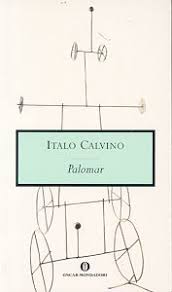 In these 27 short-short stories about an elderly man studying the world around him – waves, birds, the stars, a cheese shop, etc. – there is little action described, let alone event or even (god forbid!) plot. But as a set of meditations, it rewards readers who enjoy grappling with complexity in their fiction, as Calvino trawls through verbose philosophical conundrums about perception, identity, and the cosmos. Mr. Palomar is as close to being a story collection as it is to being a novella-in-flash: what little forward movement there is comes from a kind of ‘mathematical’ scheme – a sequence of claimed shifts among the stories – cycling through precise proportions of ‘description’, ‘narrative’ and ‘meditation’. The scheme is so intricate that the appendix announcing it appears to be part of a literary game on Calvino’s part, entirely in sympathy with the over-meticulous Mr. Palomar himself.
In these 27 short-short stories about an elderly man studying the world around him – waves, birds, the stars, a cheese shop, etc. – there is little action described, let alone event or even (god forbid!) plot. But as a set of meditations, it rewards readers who enjoy grappling with complexity in their fiction, as Calvino trawls through verbose philosophical conundrums about perception, identity, and the cosmos. Mr. Palomar is as close to being a story collection as it is to being a novella-in-flash: what little forward movement there is comes from a kind of ‘mathematical’ scheme – a sequence of claimed shifts among the stories – cycling through precise proportions of ‘description’, ‘narrative’ and ‘meditation’. The scheme is so intricate that the appendix announcing it appears to be part of a literary game on Calvino’s part, entirely in sympathy with the over-meticulous Mr. Palomar himself.
- The House on Mango Street (Sandra Cisneros, 1984)
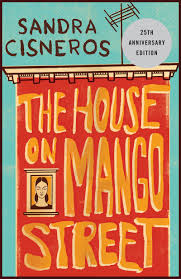 A stone-cold classic. Esperanza Cordero is growing up in a run-down tenement building in the Hispanic quarter of Chicago, negotiating family, quirky neighbours, boys, new friendships, and hoping one day for a home of her own. The language is lyrical without being sentimental, and there is a Technicolour sharpness to Esperanza’s passionate observations of the world around her, which are riddled with hopes and fears in a typically adolescent way. Stories range from 7 lines to 3 or 4 pages long and don’t progress in an explicitly chronological way. Not without moments of darkness, The House on Mango Street is a haunting yet uplifting portrait of Hispanic American life.
A stone-cold classic. Esperanza Cordero is growing up in a run-down tenement building in the Hispanic quarter of Chicago, negotiating family, quirky neighbours, boys, new friendships, and hoping one day for a home of her own. The language is lyrical without being sentimental, and there is a Technicolour sharpness to Esperanza’s passionate observations of the world around her, which are riddled with hopes and fears in a typically adolescent way. Stories range from 7 lines to 3 or 4 pages long and don’t progress in an explicitly chronological way. Not without moments of darkness, The House on Mango Street is a haunting yet uplifting portrait of Hispanic American life.
- Why Did I Ever? (Mary Robison, 2001)
 Throughout its two hundred pages – over 500 microfictions and fragments – Robison’s novel-in-flash emphasises character and voice: there is no real overarching narrative arc to glean from this stream of jump-cut mini-scenes, many of which extend for a few sentences only. As a character-study, the book is concentrated, sassy, and inventively-phrased. The narrator, Money Breton, a Hollywood script-doctor, works on a terrible-sounding movie about Bigfoot, dealing out barbed comments to various figures in her life – her cat, her friend Hollis, her methadone-addicted daughter Mev, her son Paulie (now in police care after falling victim to violent crime). The fragments offer glimpses of her life and relationships (work, family, lovers, friends), and although these separate strands don’t integrate we do get an impression of forward movement within each strand. There’s such relentless verbal and psychological energy it’s as if each fragment has been formed under intense geological pressure – like brilliant jewels.
Throughout its two hundred pages – over 500 microfictions and fragments – Robison’s novel-in-flash emphasises character and voice: there is no real overarching narrative arc to glean from this stream of jump-cut mini-scenes, many of which extend for a few sentences only. As a character-study, the book is concentrated, sassy, and inventively-phrased. The narrator, Money Breton, a Hollywood script-doctor, works on a terrible-sounding movie about Bigfoot, dealing out barbed comments to various figures in her life – her cat, her friend Hollis, her methadone-addicted daughter Mev, her son Paulie (now in police care after falling victim to violent crime). The fragments offer glimpses of her life and relationships (work, family, lovers, friends), and although these separate strands don’t integrate we do get an impression of forward movement within each strand. There’s such relentless verbal and psychological energy it’s as if each fragment has been formed under intense geological pressure – like brilliant jewels.
- We the Animals (Justin Torres, 2011)
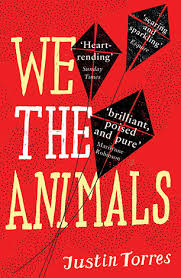 The novella-in-flash as Bildungsroman: Torres charts the growth of a boy into sexual maturity, in the midst of a madcap, chaotic, and harsh domestic life: three brothers jostling for priority (the stories are often narrated as a third-person plural “we”); an often absent, and at times abusive, father; a mother struggling to take charge. The family environment at first feels implausibly zany; yet the reader’s fondness for it grows, until one is charmed and captivated; then the novella shifts into darker territory as it concludes. Apart from a final one-paragraph story that’s more like a prose poem, most of the chapters here (ranging from 3-12 pages) are fully developed into self-contained stories, building to their own individual climaxes, yet cumulatively they describe a central protagonist gradually uncovering his own identity. In this debut work, Torres’s control of sentence-rhythms combines with a gift for narrative structure to create a stunning tour de force.
The novella-in-flash as Bildungsroman: Torres charts the growth of a boy into sexual maturity, in the midst of a madcap, chaotic, and harsh domestic life: three brothers jostling for priority (the stories are often narrated as a third-person plural “we”); an often absent, and at times abusive, father; a mother struggling to take charge. The family environment at first feels implausibly zany; yet the reader’s fondness for it grows, until one is charmed and captivated; then the novella shifts into darker territory as it concludes. Apart from a final one-paragraph story that’s more like a prose poem, most of the chapters here (ranging from 3-12 pages) are fully developed into self-contained stories, building to their own individual climaxes, yet cumulatively they describe a central protagonist gradually uncovering his own identity. In this debut work, Torres’s control of sentence-rhythms combines with a gift for narrative structure to create a stunning tour de force.
- Paperboy (Bob Thurber, 2011)
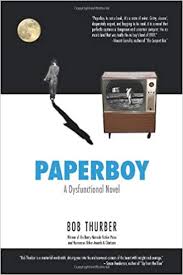 At 230 pages, this is one of the longer books in this list, and it’s remarkable how Thurber sustains the narrative feat of creating an impression of linear, continuous story (occasional flashbacks aside) from over 150 individual segments, each with its own resonant ending. The narrative isn’t for the fainthearted: in 1969, an astronaut-obsessed teenage boy in a dysfunctional family is drawn into incest, and the rest of the novel depicts how the ongoing transgressions are kept secret, as well as telling the story of his failures and frustrations working as a local paperboy. There are a host of reasons why the material ought to fail, but the book is a raw triumph, almost claustrophobic in intensity – equally funny and tragic.
At 230 pages, this is one of the longer books in this list, and it’s remarkable how Thurber sustains the narrative feat of creating an impression of linear, continuous story (occasional flashbacks aside) from over 150 individual segments, each with its own resonant ending. The narrative isn’t for the fainthearted: in 1969, an astronaut-obsessed teenage boy in a dysfunctional family is drawn into incest, and the rest of the novel depicts how the ongoing transgressions are kept secret, as well as telling the story of his failures and frustrations working as a local paperboy. There are a host of reasons why the material ought to fail, but the book is a raw triumph, almost claustrophobic in intensity – equally funny and tragic.
- Petrol (Martina Evans, 2012)
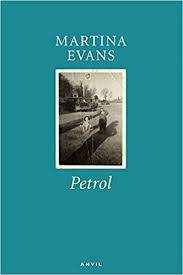 Irish poet and novelist Martina Evans published Petrol as a “prose poem disguised as a novella”. These thirty-nine one- or two-page prose pieces certainly have a poetic, crystalline brilliance. They might also be stream-of-consciousness dramatic monologues confided to the reader with a kind of controlled anarchy, so vivid is the voice of a persecuted thirteen-year-old in rural County Cork. Working at the family petrol station, three sisters deal with the reality of a new mother-in-law, while the narrator is terrorised by her father and drawn inexorably towards the forbidden attentions of a local nineteen-year-old.
Irish poet and novelist Martina Evans published Petrol as a “prose poem disguised as a novella”. These thirty-nine one- or two-page prose pieces certainly have a poetic, crystalline brilliance. They might also be stream-of-consciousness dramatic monologues confided to the reader with a kind of controlled anarchy, so vivid is the voice of a persecuted thirteen-year-old in rural County Cork. Working at the family petrol station, three sisters deal with the reality of a new mother-in-law, while the narrator is terrorised by her father and drawn inexorably towards the forbidden attentions of a local nineteen-year-old.
- The Dept. of Speculation (Jenny Offill, 2014)
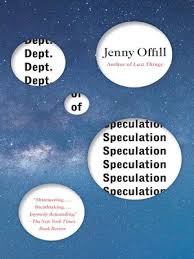 An old theme of marital infidelity is given remarkable new life in Jenny Offill’s broken-hearted novel, in which the rupture caused by the adultery is palpable, but the narrator is too pragmatic to watch herself slip under. The narrator leaps from thought to thought, through streams of observations, incidents, quotations, aphorisms and scientific facts that are sequenced into separate chapters. The wife is a creative writing tutor, the husband a sound archivist; other characters include a philosopher and an almost-astronaut, and all these roles feed into the rich themes of the text. A classic novel-/novella-in-flash might more obviously be a sequence of self-standing stories, but it’s becoming increasingly popular to publish mainstream novels like this one [witness also Megan Hunter’s recent The End We Start From (2017)], where the writing is a patchwork of fragmented paragraphs, sometimes as short as one sentence long. And all that divides its form from Mary Robison’s Why Did I Ever? (more widely accepted as a novel-in-flash) is the absence of numerical separators between fragments, which makes Offill’s book feel more like a fluid and continuous stream of material.
An old theme of marital infidelity is given remarkable new life in Jenny Offill’s broken-hearted novel, in which the rupture caused by the adultery is palpable, but the narrator is too pragmatic to watch herself slip under. The narrator leaps from thought to thought, through streams of observations, incidents, quotations, aphorisms and scientific facts that are sequenced into separate chapters. The wife is a creative writing tutor, the husband a sound archivist; other characters include a philosopher and an almost-astronaut, and all these roles feed into the rich themes of the text. A classic novel-/novella-in-flash might more obviously be a sequence of self-standing stories, but it’s becoming increasingly popular to publish mainstream novels like this one [witness also Megan Hunter’s recent The End We Start From (2017)], where the writing is a patchwork of fragmented paragraphs, sometimes as short as one sentence long. And all that divides its form from Mary Robison’s Why Did I Ever? (more widely accepted as a novel-in-flash) is the absence of numerical separators between fragments, which makes Offill’s book feel more like a fluid and continuous stream of material.
- My Very End of the Universe: Five Novellas-in-Flash and a Study of the Form (2014)
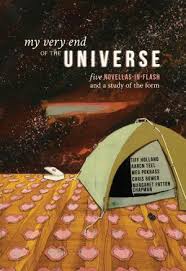 Maybe I’m cheating the numbers to include it, but a list of twelve great novels-/novellas-in-flash would be incomplete without acknowledging this anthology from Rose Metal Press: it’s a crucial text in the history of the form, presenting novellas-in-flash by five different writers, supplemented by craft essays about the creation of each work, and an informative introduction by editors Abigail Beckel and Kathleen Rooney. These essays are a wonderful welcome into what exactly the novella-in-flash is (or can be). The five novellas (by Tiff Holland, Meg Pokrass, Aaron Teel, Margaret Patton Chapman and Chris Bower) offer two coming-of-age stories, a portrait by a middle-aged daughter of her mother’s crankiness and frailty, a story about a child prodigy born to a nineteenth-century family, and an absurdist portrait of a contemporary family. This anthology will get you thinking about the potential forms of the flash fiction novella.
Maybe I’m cheating the numbers to include it, but a list of twelve great novels-/novellas-in-flash would be incomplete without acknowledging this anthology from Rose Metal Press: it’s a crucial text in the history of the form, presenting novellas-in-flash by five different writers, supplemented by craft essays about the creation of each work, and an informative introduction by editors Abigail Beckel and Kathleen Rooney. These essays are a wonderful welcome into what exactly the novella-in-flash is (or can be). The five novellas (by Tiff Holland, Meg Pokrass, Aaron Teel, Margaret Patton Chapman and Chris Bower) offer two coming-of-age stories, a portrait by a middle-aged daughter of her mother’s crankiness and frailty, a story about a child prodigy born to a nineteenth-century family, and an absurdist portrait of a contemporary family. This anthology will get you thinking about the potential forms of the flash fiction novella.
- Superman on the Roof (Lex Williford, 2015)
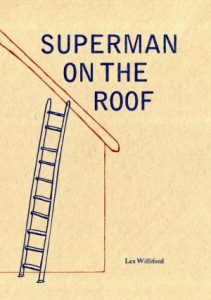 One of the shorter novellas in this list, this pamphlet offers ten 3-4-page stories that roam expansively through memories of a 1960s childhood. Williford ambitiously moves back and forward, covering the 1960s and the early 21st century, subtly placing the narrative in historical context through occasional passing references to contemporary politics. These elegiac stories circle, at their centre, a single, significant and haunting loss; in the process, they build a portrait of a harsh family environment and convent school education, in which adults seem hell-bent on punishing children’s petty transgressions. Apparently semi-autobiographical, the beautifully elegant sentences are written in a past tense that’s suffused with nostalgia – and guilt over the narrator’s involvement in family tragedy. In 38 pages, Williford weaves a tapestry that is more moving, memorable and skilfully crafted than many novels. Its form expresses all that is remarkable about the novella-in-flash.
One of the shorter novellas in this list, this pamphlet offers ten 3-4-page stories that roam expansively through memories of a 1960s childhood. Williford ambitiously moves back and forward, covering the 1960s and the early 21st century, subtly placing the narrative in historical context through occasional passing references to contemporary politics. These elegiac stories circle, at their centre, a single, significant and haunting loss; in the process, they build a portrait of a harsh family environment and convent school education, in which adults seem hell-bent on punishing children’s petty transgressions. Apparently semi-autobiographical, the beautifully elegant sentences are written in a past tense that’s suffused with nostalgia – and guilt over the narrator’s involvement in family tragedy. In 38 pages, Williford weaves a tapestry that is more moving, memorable and skilfully crafted than many novels. Its form expresses all that is remarkable about the novella-in-flash.
__________________________
 Michael Loveday’s novella-in-flash Three Men on the Edge was published by V. Press in June 2018. He helps to organise the UK’s annual Flash Fiction Festival and is judge of the 2019 Bath Novella-in-Flash Award.
Michael Loveday’s novella-in-flash Three Men on the Edge was published by V. Press in June 2018. He helps to organise the UK’s annual Flash Fiction Festival and is judge of the 2019 Bath Novella-in-Flash Award.

 A SmokeLong Summer 24!
A SmokeLong Summer 24!